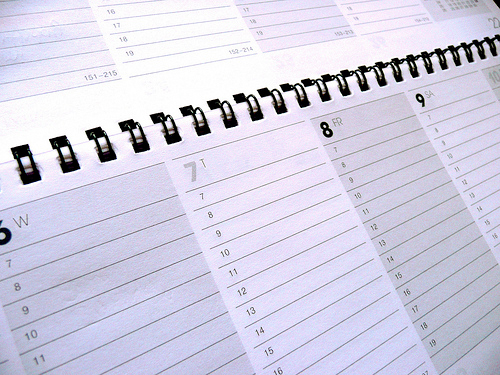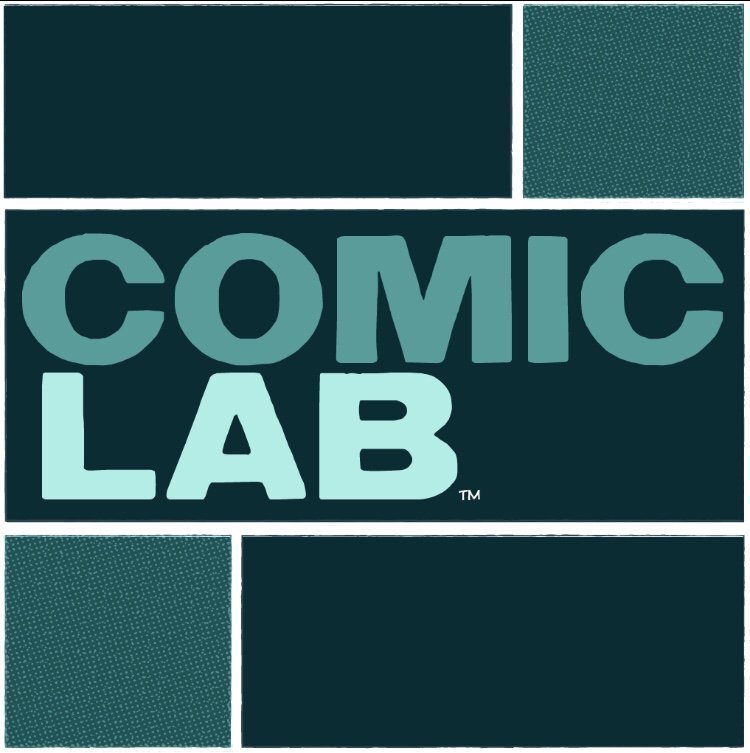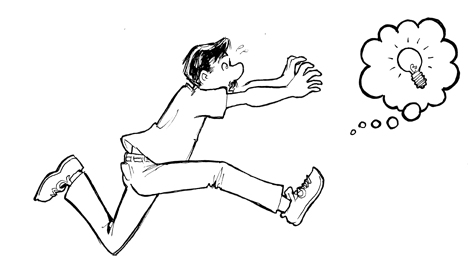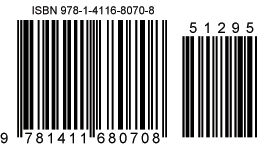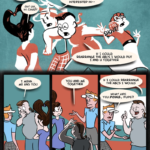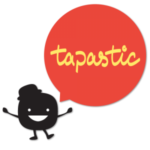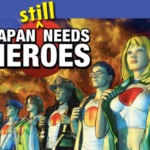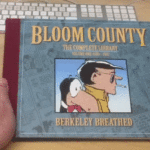 Some cartoonists have been asking me to give them my thoughts on their Patreon pages. And I’ve opened up a new Hot Seat critique series based on members’ Patreons. And — honestly, I’m a little obsessed — when I see a new Patreon page being promoted, I go over and see how they’ve got it structured. Sometimes, I find ideas worth stealing. But more often, I’m seeing a lot of the same mistakes being made over and over again. And, in my opinion, it’s having an adverse effect on your ability to generate support.
Some cartoonists have been asking me to give them my thoughts on their Patreon pages. And I’ve opened up a new Hot Seat critique series based on members’ Patreons. And — honestly, I’m a little obsessed — when I see a new Patreon page being promoted, I go over and see how they’ve got it structured. Sometimes, I find ideas worth stealing. But more often, I’m seeing a lot of the same mistakes being made over and over again. And, in my opinion, it’s having an adverse effect on your ability to generate support.
Now, this is usually where I cut the article and throw the rest of the post behind the paywall. But this one is so damned important, I’m not going to do that. If this is you, you need to stop, rethink and rebuild.
It’s not charity. It’s a business transaction
Asking for pocket change, thanking patrons in advance for their generosity, and any appeal that relies more on emotion than on the value of your work are poor strategies. In general, anything that makes your Patreon campaign sound like a hand-out, an act of mercy, or a charity is setting exactly the wrong tone for what you’re trying to do.
Honestly? I’d make it a point to avoid words like “generous.”
This is the A-1, second-to-none, deal-breaker mistake that people make on Patreon.
Why? Because it not only puts your potential patrons into the wrong mindset, but — more importantly — it puts you in the wrong mindset. And if you’re in that mindset, you’re going to make a bunch of bad decisions.
Keep reading. You’ll see exactly what I mean.
When you’re trying to get someone to give you charity, you make promises — often promises that you have no idea how you’re going to keep. You’re a panhandler on the subway rattling an empty coffee cup. You’ll say anything to get someone to pay attention.
So, what should you do?
Think of your Patreon as a business transaction. When you broker a business deal, you think of things like:
- Cost vs price
- Supply and demand
- Perceived value of goods and services
Your Patreon is a variable-rate subscription service. At different pledge-levels, you’re offering different levels of rewards. The idea is to convince someone to consider one of the lower levels, and then tempt them up to the higher levels with more and more enticing rewards. Each patron will climb the ladder to the height he or she is most comfortable with.
If your rewards are good, you’ll find people distributed all along the different rungs of that ladder.
No art
Look at the body of your Patreon page. Is it a grey block of text?
You lose.
You’re an artist, right? You’re enticing people to give you money for your art, right?
What makes you think they want to read a grey block of type?!
And why am I explaining this TO A CARTOONIST?!
Get some art in that freaking space — and high up. You need samples of your comic. You need samples of the rewards you’re offering at different pledge levels.
This is all about presentation — and, if you’re serious about comics, you should understand that by now!
Grey type?! Seriously?!?
No video
Ask any good salesperson. If you’re going to ask someone for money, you’d better be prepared to look them in the eye.
You need to make a personal connection. And that means recording your face looking into the camera, being friendly, and talking passionately about your Thing.
This isn’t about being sexy or telegenic or smooth. We’re cartoonists. None of us are that. And no one expects it.
This is about making a personal connection. If you have no video, it’s much harder to do that — and likewise if your video never shows your face.
We need to see your face. Hear your voice. Peep your studio. See the books on the shelf behind you.
Why?
Because we’re making a thousand different connections with you based on a thousand points of contact that we’re getting — both audio and visual.
It’s powerful.
And you’re ignoring it.
You blather on and on and on and on
You need to learn to prioritize — and to edit. Here’s a crash course:
Important stuff first, less important stuff next, and so on.
Apply that template to everything you write — the body text, the rewards, the goal… everything. Put the important stuff first, and then everything else, in order, according to priority.
It’s really as simple as that.
Decide what’s the most important information from the standpoint of a potential patron.
That means that in the body of your page, I need to have a QUICK introduction to who you are, and then exciting details about what I’ll get if I become your patron.
No life story. No list of things you’ve done. Don’t care about your significant other and your kids and your freaking dog.
At least not yet. Not at the top.
At the top, you need a one-sentence introduction to who you are, and then head right into WHAT’S IN IT FOR ME [the patron].
Here’s a good example. I’ve numbered the paragraphs for easy reference. As you’re reading, see if you can spot the mistake(s) made in each paragraph. Keep in mind what we just talked about.
(1) Hi! I’m redacted… Creator of the comic strip redacted!
(2) For over 25 years I’ve been redacted day job for a living: “redacted project“, “redacted project“, “redacted project“, “redacted project“, and “redacted project“. But before that career choice, I wanted to draw comic strips. It was impossible to get published way back in the 80’s, but with the tools available today, I’ve finally done it! My dream is a reality! I have my very own comic strip on the web!
(3) [text link to comic]
(4) Redacted is about movies, music, TV, video games, politics, and random stuff… as told through the adventures of redacted cast of characters!
(5) It’s a lot of work putting all this together; Creating comic strips, videos, and now a podcast. I’m trying new things, expanding as much as I can, and it’s all free to you. Even the mobile app is free. Unfortunately for me, however, bringing you redacted costly endeavor for me. The app alone is a large monthly expense. And then there are web site costs, online backup, hardware and software, office supplies, art supplies, and the list keeps growing as redacted keeps growing.
(6) I’d really like to keep this train rolling and bring you more in the years to come. So if you like redacted, and are feeling generous, you can help by becoming my patron on Patreon.
(7) Patreon is a crowdfunding service that allows creators like myself to receive monetary support from fans. For a very small recurring monthly donation, you can help me not only keep producing comics, but expand the kinds of things I can bring you. It’s also a way to show your appreciation for the work that I’ve already done and continue to do for you each month.
(8) How much should you donate? A small donation of $1 per month would really help a lot. And if EVERYONE chipped in a buck, I could really get things moving full steam ahead!
(9) But your pledge isn’t just a simple donation. There are perks! As a Patron, you’ll get to see and participate in things no one else can and you’ll receive rewards for your generous donation. The rewards you see listed won’t be the only ones. I intend keep things interesting for everyone!
So, let’s workshop this.
(1) Fine.
(2) I don’t care. And, honestly? Getting giddy over having your “very own comic strip on the web” would be OK if it was 2001. But it’s 2016. You’re number one-million-and-three. More importantly, what I really want to hear is… What’s in it for me?
(3) Seriously? A text hyperlink? You really need a sample strip here. You can link that image to the web site, or you can have both image and text link. But a text-only link is weaksauce. And you still haven’t told me what’s in it for me.
(4) When you tell me that your comic is about “movies, music, TV, video games, politics, and random stuff”… you’re basically telling me that it doesn’t have a focus. That’s fine, but it’s not helpful information. And in this case, it’s the fourth paragraph and NO FREAKING MENTION OF WHAT’S IN IT FOR ME.
(5) You need to not only delete this paragraph, but I strongly recommend burning the keyboard that you used to write it. Again… this is an offshoot of the charity mindset you adopted when you launched the page. And it has directed you towards all sorts of bad decisions.Whining about your expenses is no way to get me to dig into my own personal budget to help you. I’ve got bills to pay, too. You know what would get me to reach for my wallet? If you told me what was in it for me. But here we are at paragraph 5, and still no end in sight, because here comes paragraph 6…
(6) And more charity, gooey, begging-on-your-knees talk. So far, I feel like this Patreon page should be written on a piece of cardboard with a borrowed Sharpie.
(7) You’re gonna explain Patreon to me? It’s not that it’s not useful. But it should come at the end of the body text. And you still haven’t told me what’s in it for me.
(8) More charityspeak. And you still haven’t told me what’s in it for me.
(9) You finally told me what was in it for me!
Except that you actually didn’t. There are no details, just vague allusions to stuff.
It’s not really important because most people bailed out at paragraph four. But for the one or two insomniacs who made it this far, a few details would have been welcomed.
The rewards you see listed won’t be the only ones. I intend keep things interesting for everyone!
Meaningless promises of vague, nameless, shapeless rewards? Shut up and take my money!
It’s not that all of this information is bad information. In fact some of it is good. If your day job gives you a certain amount of prominence or notoriety, then include it. But do it further down the page, after the more important stuff like what’s in it for me. Same with information about your family. Same with explaining Patreon.
It’s only bad when it’s standing in the way of the good stuff.
Prioritize — ruthlessly.
Want a monthly pledge? Then you need a monthly reward
I actually saw a Patreon reward — at the $5 level — that required the patron to pledge $5 for 24 consecutive months.
Patreon doesn’t work like that.
Patrons come. Patrons go. And then they return. And then they leave again.
They pledge $5. Then they pledge $10. Then $1.
So, it’s unrealistic for you to expect them to pledge consecutively for a couple months — let alone a couple of years.
Not only that, but how are you going to track all of that?
Three months. Tops. If you have a high-value reward that you want to ask for more than one round of pledging for, I think three months is the longest you can ask someone to go without being rewarded.
Best case scenario? Your patrons are rewarded with something every time they give you money. It’s really very simple.
Remember. This is not charity. It’s a business transaction.
When a customer puts his or her money down, they expect to receive something.
If they don’t get it (or if the Thing isn’t what they expected) they won’t be a customer any longer.
You’re giving all your money back on shipping
If you’re shipping goods for anything less than a $20 pledge, you’re making a huge mistake. Shipping is expensive. And remember, a significant portion of your backers are going to be from Canada, Great Britain, the Netherlands, and so forth. And international shipping is Hot Death on your budget.
You’re overcommitting
You’ve gotten so caught up in the charity mentality, that you made promise after promise after promise without giving any clear thought to what it was going to require if people actually took you up on all of those promises!
You’re doing Rewards wrong
First of all, you’re not really offering anything of value. All of the following are, essentially, low-value items:
- A sincere thank-you
- Access to the private patreon feed
- Sketches
- Early access to the comic
- Behind-the-scenes art and writing
That’s fine for low-level pledges — like $1 and possibly $5.
But for anything higher than that, you actually have to have something of value that you’re prepared to deliver month after month after month.
That can be digital — and for under $20 it should be digital. But it has to have worth. Here are some good ideas:
- PDF collections from your archive
- Video tutorials (if the quality of your work is high enough)
- Exclusive comics
- Exclusive features
Also, prioritize wording. When you’re listing what I get at each level, you should lead with the most exciting thing. And then the next exciting thing. Only at the end should you say that you also get the stuff from the previous levels.
In other words, this is wrong:
PLEDGE $1
YOU LIKE ME! Thanks for your generous pledge! Each month you get…
Everything in the $1 pledge!
See sketches and Works-In-Progress!
Get DIGITAL copies of any comic books I whip together.
(1) First of all, lose the first sentence (“You like me…”). It doesn’t tell me what’s in it for me, and it just gets in the way. PRIORITIZE.
(2) Knowing that I get everything in the previous level is nice, but it’s not what I’m here for. I wanna know what’s in it for me. Put this sentence AT THE END.
(3) “Digital copies of comic books…” THAT is what I’m here for. This sentence needs to be AT THE TOP.
Except, of course, that “any comic books I whip together” doesn’t exactly sound like a sure thing. I’m not sure I’m getting it on a regular basis. And I don’t even know what kind of comic book this will be. It sounds like I’m getting table scraps. Rushed together. An afterthought. Nope, this certainly doesn’t sound like something that’s worth actual money.
But if it was, I’d want it at the top.
You’re confusing Patreon with Kickstarter
Promising physical copies of your upcoming book is a bad move. It’s actually disastrous.
A physical copy of your book is something you offer to the people who back your Kickstarter.
A Patreon is for ongoing work.
A Kickstarter is a fundraiser for a specific project (one that may have come out of that ongoing work).
And there’s absolutely no need to reward the backer of one with the item from the other.
Know what my Patreon backers got when I launched my Kickstarter?
An early heads-up.
I told them when it was going up, and directed them towards limited Early Bird specials that offered free/discounted shipping.
And nothing else.
Do you know how many Patreon backers were upset that they weren’t getting a free book?
Zero.
Know why?
Because I never approached my Patreon like it was charity! I handle it like a business transaction. And my “customers” were already satisfied with what they had gotten in return for the money they spent on Patreon. I made sure of that.
As a result, a significant chunk of them became Kickstarter backers as well.
And a bunch of my Kickstarter backers become Patreon patrons in the process.
It was perfect cross-promotion.
But if I had offered the rewards of one to the backers of the other, it would have fizzled.
But if I treat my Patreon like a charity. I don’t have customers, I have benefactors. And benefactors expect to have things given to them in return for their generosity.
I’ll take customers any day.
You have nothing to offer / you’re not offering what they want
That’s pretty simple, right? Has your Patreon stagnated? Has it failed to take off?
It’s not Twitter’s fault. It’s not SEO. And it’s not that all the backers are already giving their money to other people.
You’re not offering them what they want.
(Honestly… if your comic itself is stagnating, it’s for the same reason.)
It’s up to you to figure out what that is, and offer it.
You’re doing Goals wrong
Goals should be easily distributed to all of your supporters. Any goal that has to be mailed is a bad idea — for two reasons. First, it eats up the money that’s supposed to go to you! Secondly, people who join later won’t be able to get that goal, and that’s going to leave them feeling dissatisfied.
Here’s a case study. A Patreon I reviewed offered to create a trading-card-sized, numbered illustration for each patron if they reached $100. The campaign stood at $35 with 16 backers. That being the case, it was going to take roughly three times that many backers to reach 100. That’s almost fifty patrons!
He’s promising 50 trading cards in exchange for reaching $100.
Forget about the expense — the blank cards, the shipping materials, the postage, etc. Do you know how long it’s gonna take to do 50 cards — assuming they’re not rushed-through and crappy looking? Let’s assume the person in question is an art ninja and he or she can crank out a nice card in 20 minutes. That’s a good 16 hours’ work. Throw in the processing of all of the postage/ addresses and so on. And figure a small percentage of the cards are being mailed internationally. It all adds up to a tremendous headache.
Assuming this is something you do in your spare time, it’s a game-stopper.
ALSO…
And, while we’re on the topic…
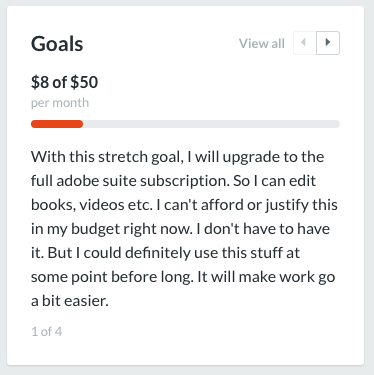
My opinion is that your goal should reward your backers — not you.
Think about it — what is Patreon’s purpose for implementing a “Goal.” It’s not so you can tell people where the money’s going. (They don’t really care.) And it’s not so you can post a personal wish list.
The Goal is there so you can turn your Patreon campaign into a GAME — and event. You can encourage new patrons to join if they can participate in unlocking new rewards for the entire group. It’s not for you, it’s for THEM. Making new patrons feel like they’re PART of something is Community Building at its finest — and it’s one of the most powerful tools you have towards success in webcomics in general.
Your goal should be something you can easily distribute to all of your backers. And it’s even nicer is the people who come in later can get one, too.
You’re not promoting it right
Every post you make on Patreon is a reason to take to your site and social media and share the good news — with a link to your Patreon page. You’ve got a party going on over there, and you want everybody who’s not there yet to see what a good time all the people inside are having.
Every month that goes by is a reason to post an update showing everybody in the outside world the sheer volume of great stuff you’re offering your Patreon backers. Here’s an example from Evil Inc. I make a post like that at the beginning of every month. And I point to it from several social-media sites.
You’re already offering a free webcomic. You don’t have to feel guilty about offering a certain amount of content exclusively to paying Patreon supporters. In fact — unless you’re making serious money on ads — the reason you’re doing a webcomic is to direct people towards your Patreon page. And your website should reflect that as well.
That’s the business model right now, in my opinion. The free comic is there to generate interest in the exclusive content.
That means re-thinking a decade of “webcomics business model.”
If you’ve ever been curious about the kind of information, tutorials and advice that you’ll get as part of your subscription to Webcomics.com, this is a good example. If you’d like to join the site, you can get a monthly subscription for $5 — or save 50% and get 12-months for $30!



